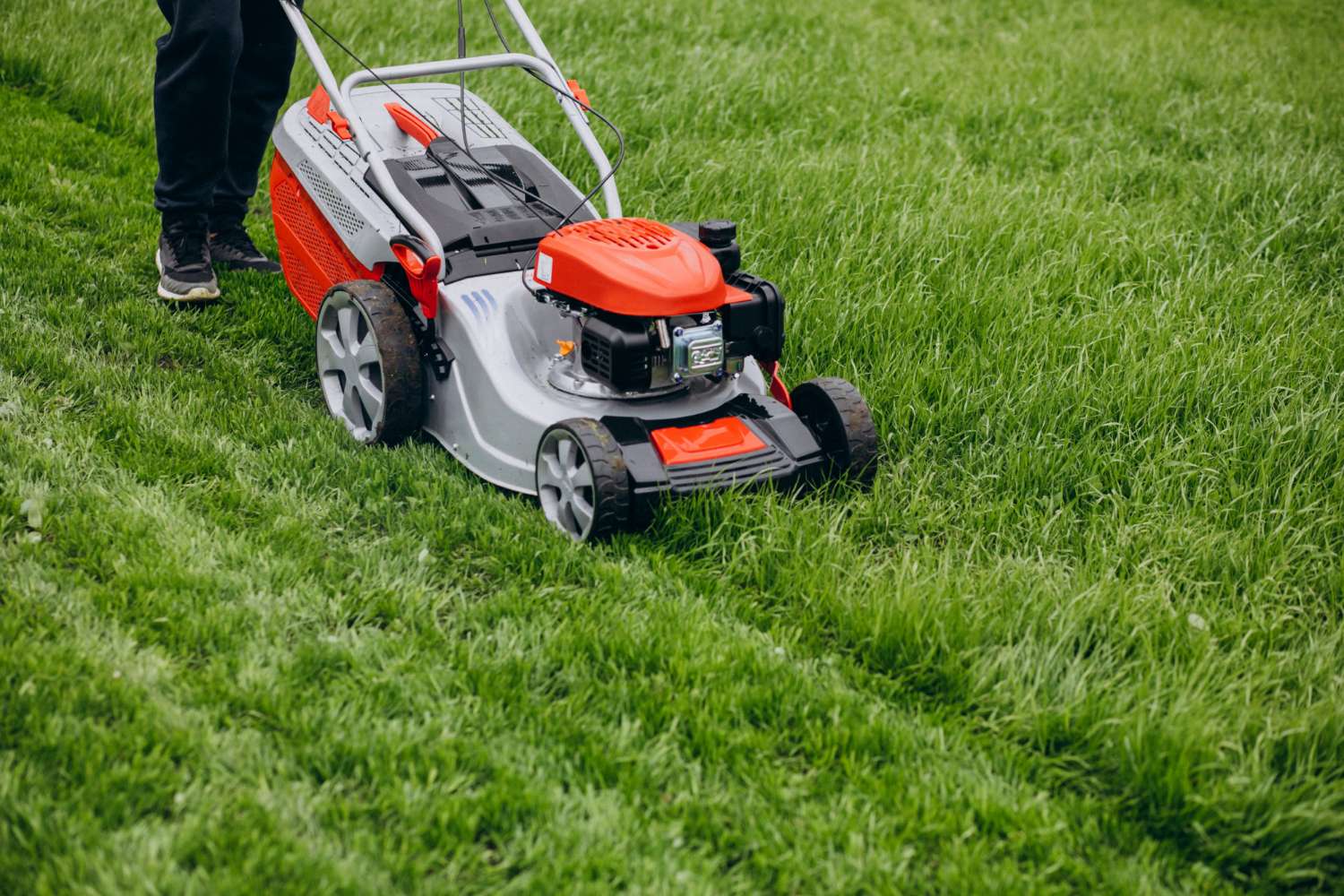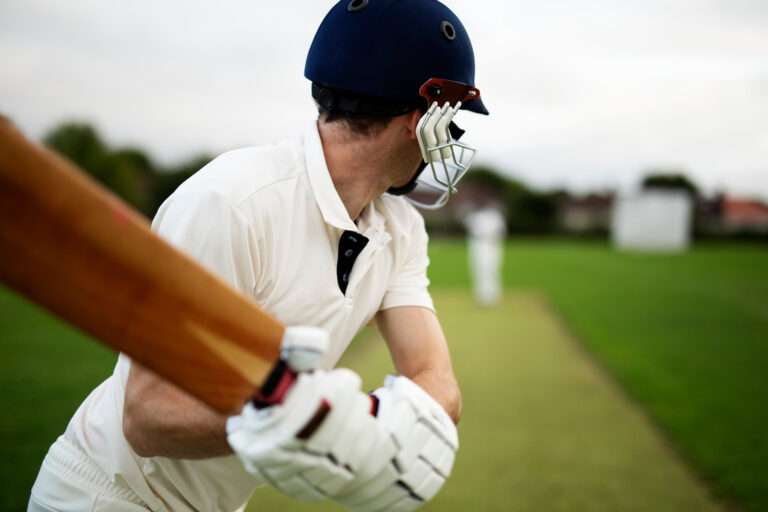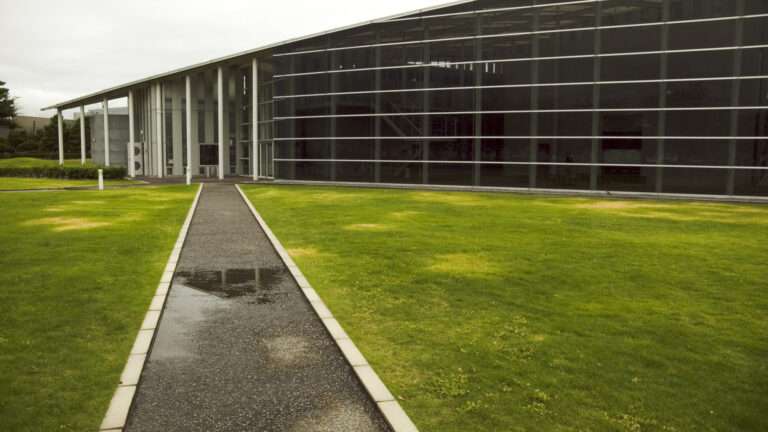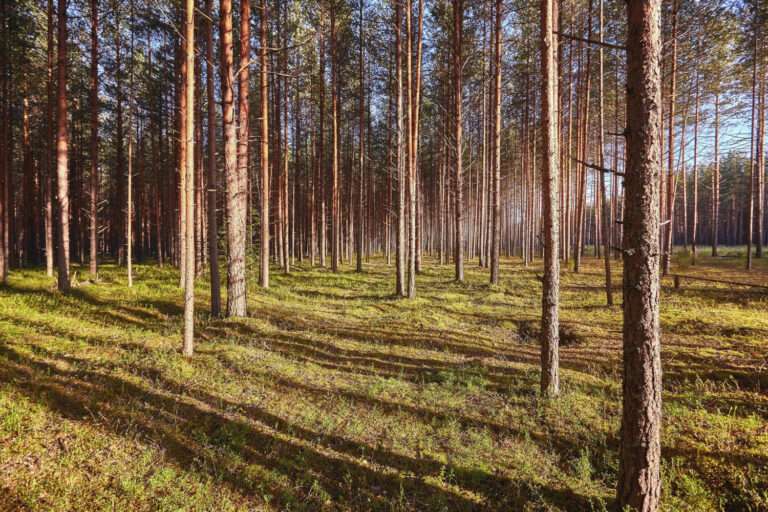The Science Behind Sports Field Mowing: Why Height, Frequency and Timing Matter
Anyone who’s stood pitch-side on a Saturday morning knows a good surface when they see one. The colour. The firmness underfoot. The way the ball glides. But here’s the thing – that perfection doesn’t happen by chance. It’s not just about mowing stripes into the grass for show. It’s a science. And a surprisingly delicate one.
Sports turf lives or dies by the mower. Cut it too short and you’ll weaken the grass. Leave it too long and you’ll lose playability. Then there’s timing – temperature, growth rate, rainfall – all play their part. What looks like simple mowing is, in truth, an ongoing balancing act between plant biology and performance expectations.
And when it’s done right, correct mowing regimes protect turf health, improve playability, and extend the lifespan of sports surfaces.
Let’s unpack that.
Why Mowing Height Really Matters
Grass isn’t just decoration – it’s a living system. It uses sunlight to produce energy, stores it in its roots, and regrows after each cut. Chop it too short and you’re cutting into that stored energy. That’s when the trouble starts: stress, shallow roots, and a surface that loses its resilience after heavy play.
Different sports demand different mowing heights. A rugby pitch can tolerate longer grass (25–35 mm) because traction matters more than speed. Football, by contrast, demands a faster surface – typically around 20–30 mm. Cricket squares? Much tighter. Bowls and golf greens? Practically shaved.
| Sport | Typical Mowing Height (mm) | Notes |
|---|---|---|
| Football | 20–30 | Shorter in summer, slightly higher in winter |
| Rugby | 25–35 | Encourages durability and cushioning |
| Cricket Outfield | 10–15 | Even cut critical for smooth ball roll |
| Golf Green | 3–6 | Requires precision and high maintenance |
| Athletics Field | 25–40 | Focus on safety and appearance |
It’s tempting to mow short for a neater look, but you pay for it later. Shallow roots dry out faster. Disease creeps in. Recovery slows. In my experience, a few extra millimetres of height can mean the difference between a lush, playable surface and a threadbare one by mid-season.
Frequency – the Often Overlooked Factor
Frequency is the rhythm of turf management. Cut too often and you stress the plant; leave it too long and you end up scalping when you do mow. The old “one-third rule” still holds true – never remove more than a third of the grass blade in one go.
During peak growing months (typically April to September in the UK), that can mean two or even three cuts a week on intensively managed pitches. When growth slows, you ease off. Simple enough – but it’s the discipline that counts. Miss a week during a growth spurt and you’ll be fighting to recover surface quality for the next fortnight.
Infrequent mowing also creates uneven swards. Taller grasses shade out weaker species, leading to patchiness. Then the ball bobbles, player confidence dips, and before long someone’s moaning about “the pitch”. Sound familiar?
Routine matters. A steady, predictable schedule keeps turf dense and uniform, which in turn helps resist weeds and moss. It’s a virtuous cycle when done right.
Timing – More Than Just the Day of the Week
There’s a knack to knowing when to mow. It’s not just about the calendar.
Grass physiology changes through the day. Early morning dew? Too wet. Midday sun? Too hot. Late afternoon? Often ideal. The grass is dry enough, photosynthesis has peaked, and you’re not scorching the leaf.
Seasonal timing is just as critical. In spring, mowing encourages tillering (new shoot growth). In midsummer, it keeps the canopy open for air flow and disease prevention. Autumn cuts prepare the plant for dormancy. Even winter has its place – light cuts during mild spells prevent that “tufted” look that kills presentation.
Weather plays havoc too. Wet soil compaction ruins even the best-laid plans, while dry conditions can cause mower blades to shred instead of slice. The key is flexibility – respond to the turf, not the calendar.
The Hidden Science: Photosynthesis, Root Growth and Stress
A healthy grass plant is an energy-management machine. Mowing interrupts that process, forcing it to use stored carbohydrates to regrow. That’s why consistent, measured mowing is so important.
When you scalp turf (cut too short), you strip away leaf area and reduce its ability to photosynthesise. Less energy means weaker roots. Weaker roots mean poor water uptake, less nutrient absorption, and slower recovery after play. Before long, you’re patching divots instead of maintaining density.
Regular, moderate cuts promote lateral growth. The plant thickens rather than stretching upwards – perfect for creating that dense, resilient surface players love. It’s counterintuitive, but cutting often enough (without overdoing it) encourages strength, not weakness.
How Mowing Affects Playability
Ask any player and they’ll tell you – surface feel changes everything. Ball roll, bounce, traction, even injury risk.
Shorter grass speeds up ball movement but increases wear. Longer grass cushions impact but can slow the game. The challenge is finding the sweet spot between performance and plant health.
Then there’s consistency. Uneven cuts, mower scalping, or wheel ruts all alter the way a ball behaves. On multi-use sites – think school or council pitches – those imperfections multiply fast. The best-maintained fields all have one thing in common: regular, precise mowing that respects the turf’s biology.
A small detail, but vital – sharp blades. Dull blades tear rather than cut, leaving ragged edges that brown off within days. Not only does it look poor, it opens the door to disease pathogens. In professional setups, blades are often sharpened weekly. For community pitches, at least monthly. It makes a world of difference.
Sustainability and Cost Efficiency
It’s not all about aesthetics. Efficient mowing regimes reduce resource use. Less fuel, less water, fewer fertilisers. When turf is strong and balanced, you don’t need to prop it up with chemicals or irrigation.
There’s also wear and tear on machinery to consider. Frequent light cuts put less strain on equipment than occasional heavy ones. Engines run cooler, blades stay sharper, and operators spend less time correcting mistakes.
For larger facilities – say, local authorities or universities managing multiple pitches – optimising mowing schedules can save thousands annually in maintenance costs. That’s before you count the extended life of the turf itself.
Weather, Growth Patterns and Soil Types
UK weather keeps groundskeepers humble. A dry spring followed by a wet summer can throw your entire mowing plan off. Clay soils hold moisture and compact easily; sandy soils drain quickly and stress faster in heat.
It’s why rigid calendars rarely work. The best professionals read the ground like a book. They watch growth rates, soil moisture, and colour changes. They know when to hold back and when to push on.
There’s a biological rhythm to turf. Once you learn it, you can almost predict what the grass needs before it shows it.
Machinery Choice – the Unsung Variable
Cylinder mowers, rotary mowers, ride-ons, pedestrian units – each has its place. Cylinder mowers produce that clean, scissor-like finish ideal for fine turf. Rotary mowers cope better with longer or wetter grass.
For large sports fields, hybrid systems (combining rotary and cylinder elements) are gaining popularity for their balance of finish and practicality. The machine isn’t just a tool – it dictates your achievable quality.
Weight distribution matters too. Heavier units can compact the surface, especially on damp soils. Over time, this leads to drainage issues and thatch buildup. Lightweight pedestrian units, although slower, are often preferred for high-end turf where precision trumps speed.
The Role of Mowing in Turf Recovery and Renovation
After heavy matches or tournaments, mowing helps restore equilibrium. Light topping stimulates regrowth and encourages the turf to close up divots. Combined with aeration and feeding, it helps bring the sward back to balance.
Some grounds teams also use mowing patterns strategically – alternating directions reduces compaction lines and ensures upright growth. Those stripes everyone admires aren’t just for show; they’re a by-product of smart, alternating passes that keep grass blades uniform.
Common Mistakes (and How to Avoid Them)
- Cutting too low – It weakens roots and exposes soil to heat stress.
- Mowing wet grass – Leads to clumping, tearing, and soil compaction.
- Using dull blades – Ragged leaf tips invite disease.
- Ignoring mower calibration – Uneven decks cause scalping and ridges.
- Neglecting consistency – Sporadic mowing disrupts turf density.
These sound obvious, but they’re the five sins most often seen on local pitches. Small oversights that add up to big losses in quality.
Integrating Mowing with Broader Turf Care
Mowing doesn’t exist in isolation. It sits alongside aeration, fertilisation, irrigation, and weed control. Get the mowing right, and everything else works better. Get it wrong, and no amount of feeding or spraying will fix the underlying weakness.
That’s why professional grounds management plans treat mowing as the foundation. For an overview of how structured maintenance schedules combine all these elements, see our page on sports field mowing.
In Summary
A perfect sports field isn’t luck. It’s layers of science, observation and timing. Mowing height sets the tone. Frequency builds resilience. Timing shapes recovery.
Every cut sends a signal to the plant – grow, thicken, strengthen, recover. And if those signals are consistent, the grass responds in kind.
The best surfaces – the ones players rave about – are rarely the flashiest. They’re steady. Balanced. Looked after week in, week out by people who understand that grass has moods, rhythms, and limits.
That’s the art (and science) of mowing.
Killingley Insights is the editorial voice of NT Killingley Ltd, drawing on decades of experience in landscaping, environmental enhancements, and civil engineering projects across the UK.








